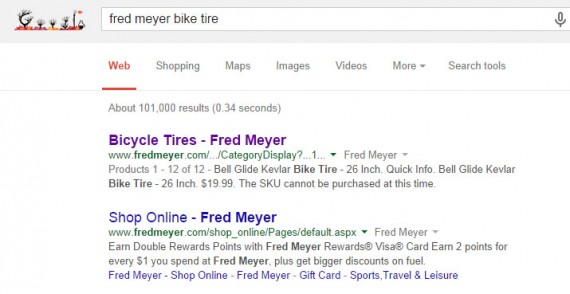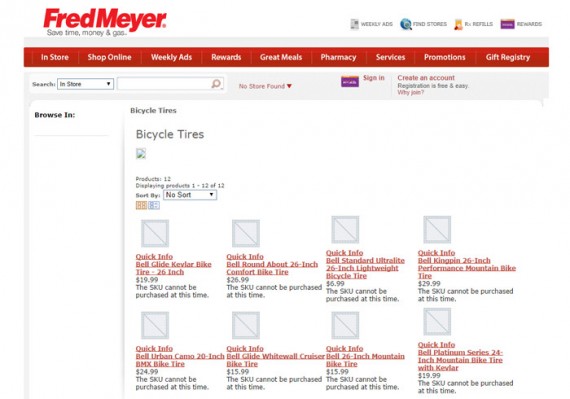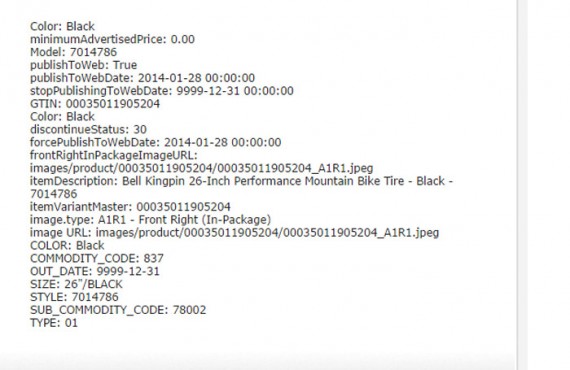Sometime a small thing, like sending a thank you card or carefully choosing which related products to feature on a product detail page, can have a positive impact on an ecommerce business.
Certainly there are sweeping business strategies and powerful software solutions that may help your business. But what about little things that you can do in a few minutes or, perhaps, a few hours that could help your ecommerce business improve?
Here is a list of seven little things to consider.
1. Upsell and Cross-sell
Nearly every ecommerce platform offers some way for online sellers to feature related products.
If a small or mid-sized ecommerce business owner or manager is overlooking this opportunity, either not bothering to add upsell and cross-sell products or not putting a lot of thought into the products they list, sales could be missed.
Upselling is the act of encouraging a customer to purchase a product similar to the one she is looking at, but which has either a higher selling price or a higher margin. Cross-selling is the process of encouraging shoppers to buy complementary products after they have purchased or indicated that they have an intention to purchase.
Practically, upsell and cross-sell offers in ecommerce are made on product detail pages or during the checkout process.
Using sales affinity (relationship) data, make an effort to pick upsell and cross-sell products that are likely to encourage shoppers to add items to their shopping cart, boosting the value of their order.
Often online sellers can improve upsells and cross-sells without any change in software. It just take a little bit of research.
2. Close Out Slow-moving Products
Products that sit on your shelf and sell very slowing can, in many instances, reduce cash flow and actually slow down a business’s growth. It is for this reason that many brick-and-mortar retailers have closeout sales, and it is the reason that ecommerce business ought to have closeout sales too.
Look for products in your inventory that:
- Sell-through less than once each quarter;
- Are seasonal;
- Are perishable;
- Have been replaced with a newer model or version;
- Or that have not sold online in a month or more.
Offer these items at special prices on your site, in marketplaces, or even in classifieds like Craigslist.
Depending on the size of your business, closing out aging inventory might take an afternoon or, perhaps, a few days, but the result should be a cash boost and the opportunity to get in new, faster selling items.
3. Add Live Chat
Live chat allows customers to ask questions or express concerns just as they are in the process of making a buying decision, potentially boosting conversion rates or improving the customer shopping experience for your business.
What’s more, once you have live chat, you will find that you can discover common problems with your site or common customer concerns. Addressing these common problems and concerns can lead to an overall increase in conversions.
Adding live chat to most ecommerce platforms is a relatively simple task that requires very little technical expertise. What’s more, live chat can also be very inexpensive, and it can be turned on, if you will, when it is convenient.
4. Add a Phone Number
For many of the same reasons that live chat can help merchants connect with customers and improve conversion rates, the simple act of adding a phone number to your website can also help with some customers.
Merchants might also list “call center hours” or use a simple script to hide the phone number on the site when no one is available.
In most cases, even if you are getting a new phone number, this is a tiny improvement that you can have done in a few hours at most.
5. Proofread Your Website
Even the largest of companies can make errors on their ecommerce websites and taking just a few minutes to proofread your site can make a significant improvement.
In fact, sometimes you may not even know how bad it is until to start to proofread. Simply take a few minutes each day to use your website in a way similar to how your customers would use the site, reading your way through each page.
It may also be necessarily to try to get to your site from other sites or search engines in order to ensure that customers are seeing what you expect.
As an example, at the time of writing, brick-and-click retailer Fred Meyer’s bike tire category was not necessarily working as the retailer probably hoped.

The link Google showed at the top of its search results page was likely not the one the retailer wanted visitors to see.
If you followed the link from a Google search results page for the search query “fred meyer bike tires” the resulting category page is completely without product images.

The category page had no product images.
If a shoppers coming from Google clicked on one of the imageless products, the resulting product detail page had information that seemed like it was dumped directly from a database.

The product detail page had data seemingly dumped from a database.

A close inspection show when the item was to be live on the web, which is not normally something you would share with customers.
Interestingly, if you searched for bike tires directly on the Fred Meyer site, a different and functional results page is returned, thus the need to come at your site in the ways that your customers might find you (via Google, for example).
6. Offer Free Shipping
Various studies and, really, common sense demonstrate that customers would rather not pay for shipping. In fact, more than half of online orders shipped in the forthcoming holiday season are likely to include free shipping.
If your business is not already offering a free shipping option, you need to add one. Most ecommerce platforms have some form of free shipping option built in, so that there will likely be just a minimal amount of configuration. The most difficult part about free shipping is understanding that while you will be giving away some margin, you should make more overall as sales increase.
7. Send Thank You Cards
When a customer places an order, send her a thank you card. Email will work, but using the regular old postal service is even better. The card lets them know how much you appreciate their business.




